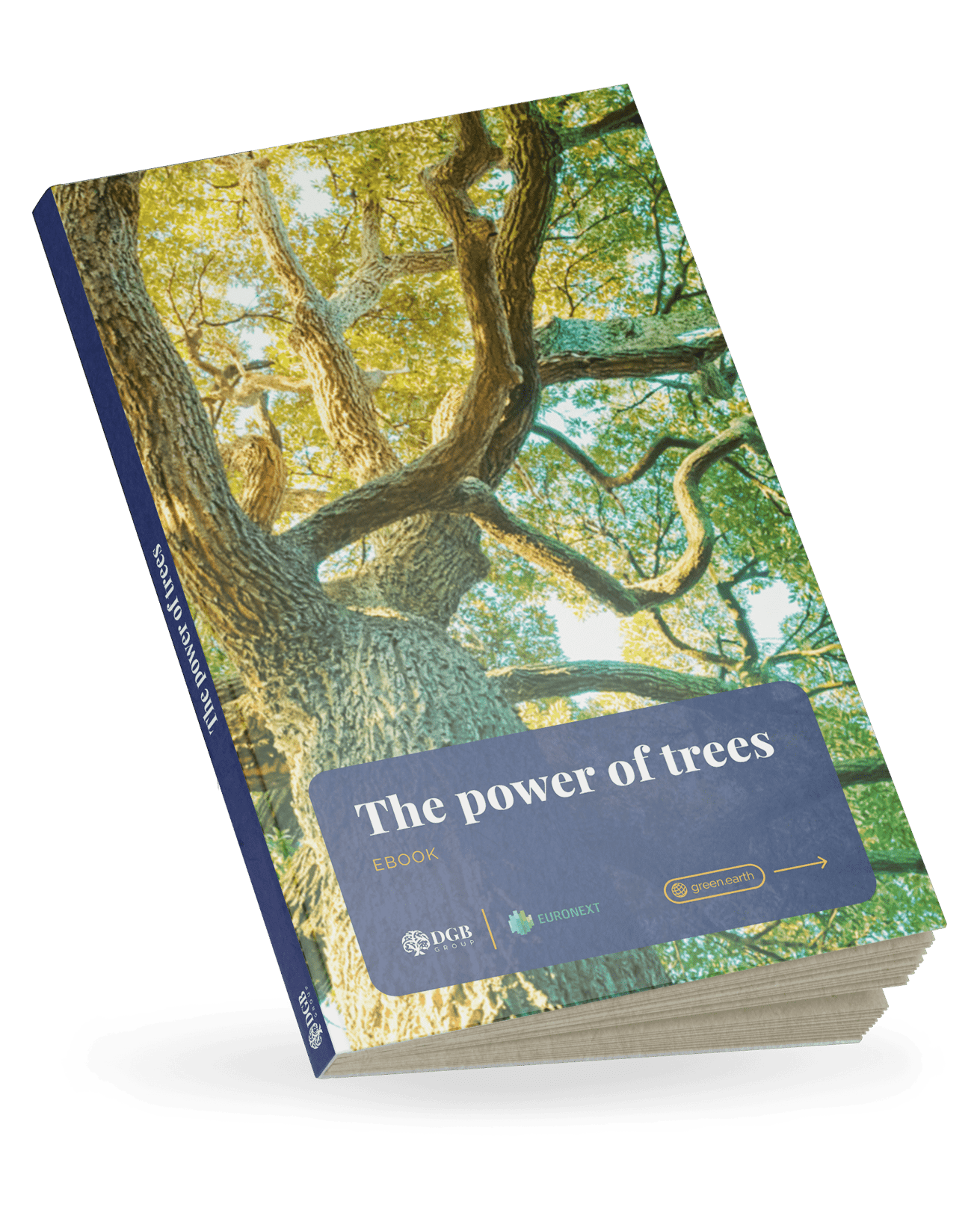In the ever-evolving landscape of contemporary business, the Triple Bottom Line (TBL) has emerged as an indispensable framework for organisations seeking to navigate the intricate interplay of social, environmental, and financial dimensions. What sets the TBL apart is its holistic perspective. This blog delves into the essence of the Triple Bottom Line, its three key dimensions, and its profound significance in fostering sustainability.
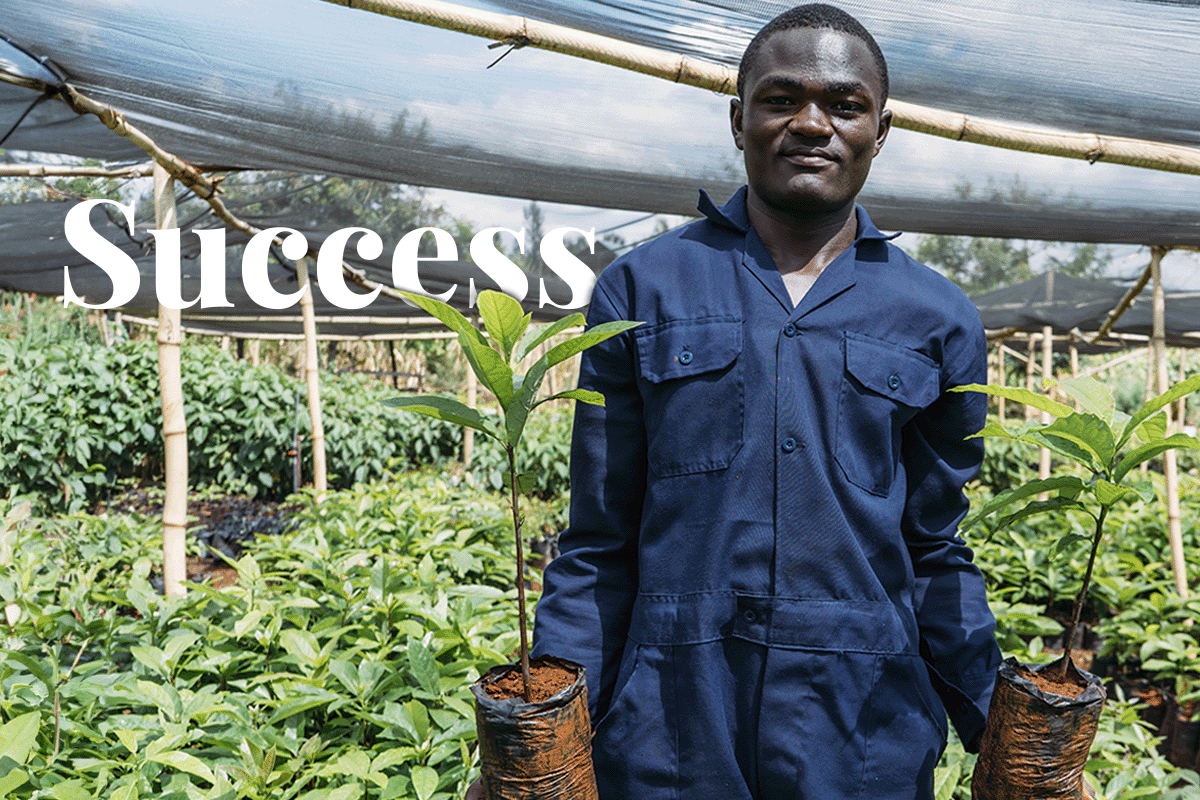 A local man working in a tree nursery in Kenya, Hongera Reforestation Project, DGB.
A local man working in a tree nursery in Kenya, Hongera Reforestation Project, DGB.
What is the Triple Bottom Line?
Developed by John Elkington, an authority on corporate responsibility and sustainable development, the TBL aims to transcend traditional profit-centric models, prompting businesses to consider a broader spectrum of impacts. Unlike traditional frameworks fixated on monetary considerations, the TBL recognises the interconnectedness of financial success, social responsibility, and environmental stewardship. By weaving ecological and social measures into the fabric of evaluation, the TBL paints a comprehensive picture of an organisation's impact on the world.
Moreover, the TBL challenges the notion that financial gains alone define success. It advocates for a more nuanced and inclusive understanding of organisational performance—one that acknowledges the intricate interplay between profit generation, social dynamics, and environmental sustainability.
Read more: How to stay ahead of the curve on sustainability
In essence, the TBL serves as a compass for organisations navigating the complex landscape of the modern business world. It beckons them to move beyond conventional measures, encouraging a holistic approach that not only ensures financial prosperity but also nurtures societal wellbeing and environmental health.
The three Ps of the Triple Bottom Line
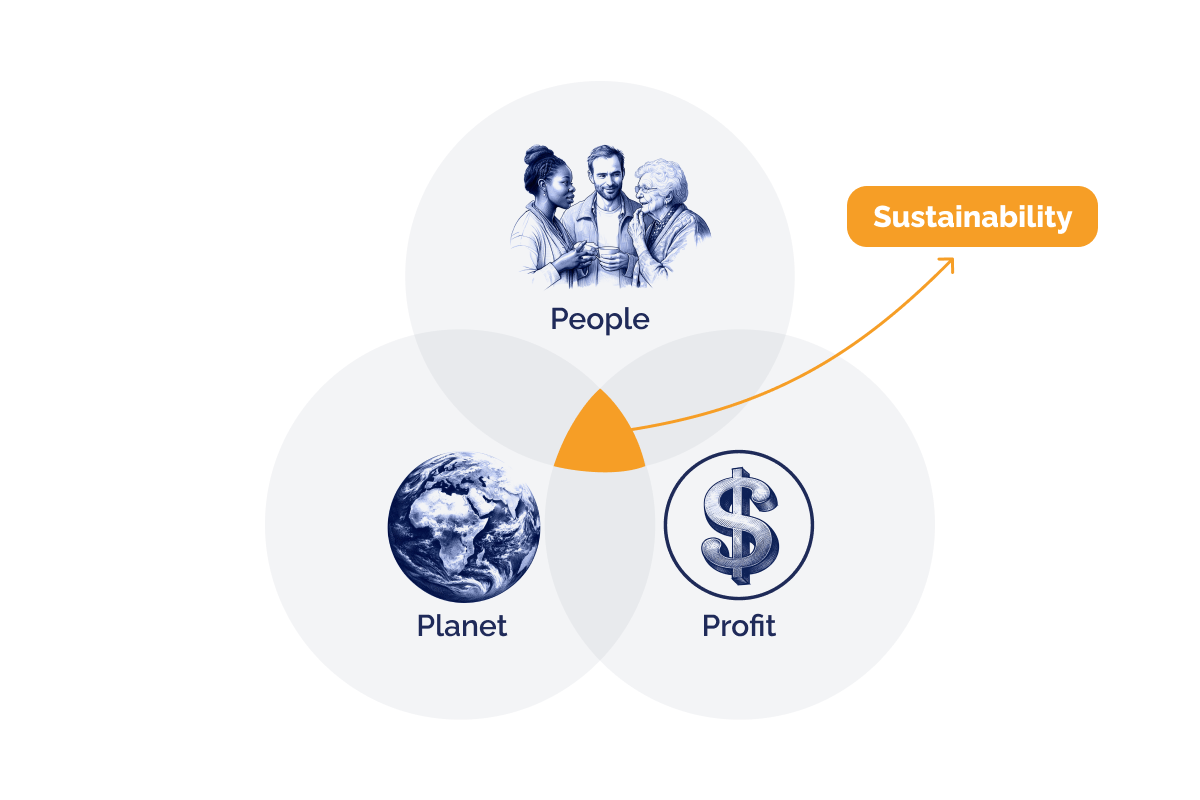 An explanation of the Triple Bottom Line.
An explanation of the Triple Bottom Line.
-
Profit: In the context of TBL, profit is not merely about financial gains but extends to broader economic variables. It includes considerations such as personal income, business environmental factors, and revenue distribution by sector, thereby reflecting the financial health and resilience of the organisation.
-
People: The social dimension, encapsulated by 'People’, delves into various societal aspects. From unemployment rates and education levels to health-adjusted life expectancy, TBL acknowledges the intricate tapestry of human factors that influence and are influenced by an organisation's activities.
-
The Planet: Environmental sustainability is a cornerstone of the TBL. This dimension assesses an organisation's impact on the natural world, scrutinising factors like air and water quality, energy consumption, and land use. It emphasises the responsibility of businesses to preserve ecological balance.
Embracing the 3Ps, the TBL guides businesses towards a future where success is measured not just in profits but in the positive contributions made to people and the planet.
Why is the Triple Bottom Line important?
 Close-up of a man planting a tree seedling, Hongera Reforestation Project, DGB.
Close-up of a man planting a tree seedling, Hongera Reforestation Project, DGB.
The importance of the TBL transcends conventional business paradigms, underlining a profound shift in organisational philosophy. Here's a closer exploration of why the TBL is indispensable in the contemporary business landscape:
- Comprehensive impact assessment: At its core, the TBL facilitates a comprehensive assessment of an organisation's impact on the world. It transcends the narrow confines of financial gains and ventures into the intricate web of social, human, and environmental dimensions. This holistic evaluation provides a nuanced understanding of the organisation's role in the broader ecosystem.
- Alignment with sustainability goals: Embracing the TBL positions businesses as active contributors to sustainability goals. By integrating social responsibility and environmental stewardship into their operational DNA, organisations align with global efforts to create a more sustainable future. This alignment benefits the planet and resonates positively with stakeholders who increasingly prioritise ethical and sustainable practices.
- Enhanced long-term viability: The TBL is not merely a conceptual framework; it is a strategic imperative for long-term organisational viability. As businesses navigate an ever-evolving landscape, those that factor in the TBL are better positioned to weather challenges. This approach mitigates risks associated with changing societal expectations, environmental uncertainties, and economic fluctuations, fostering resilience and adaptability.
- Societal relevance: Beyond financial success, the TBL elevates an organisation's societal relevance. In an era where consumers, investors, and employees are increasingly socially conscious, businesses that prioritise the 3Ps gain credibility and trust. This societal relevance extends beyond profit margins, creating a positive reputation that resonates with a diverse array of stakeholders.
- A catalyst for positive change: The TBL serves as a catalyst for transformative change within organisations. By encouraging a holistic view of success, it prompts businesses to reevaluate their practices, from supply chain ethics to employee welfare. This introspection fosters a corporate culture that values financial prosperity, the wellbeing of people, and the preservation of the planet.
Read more: 5 Sustainable business practices to achieve net zero
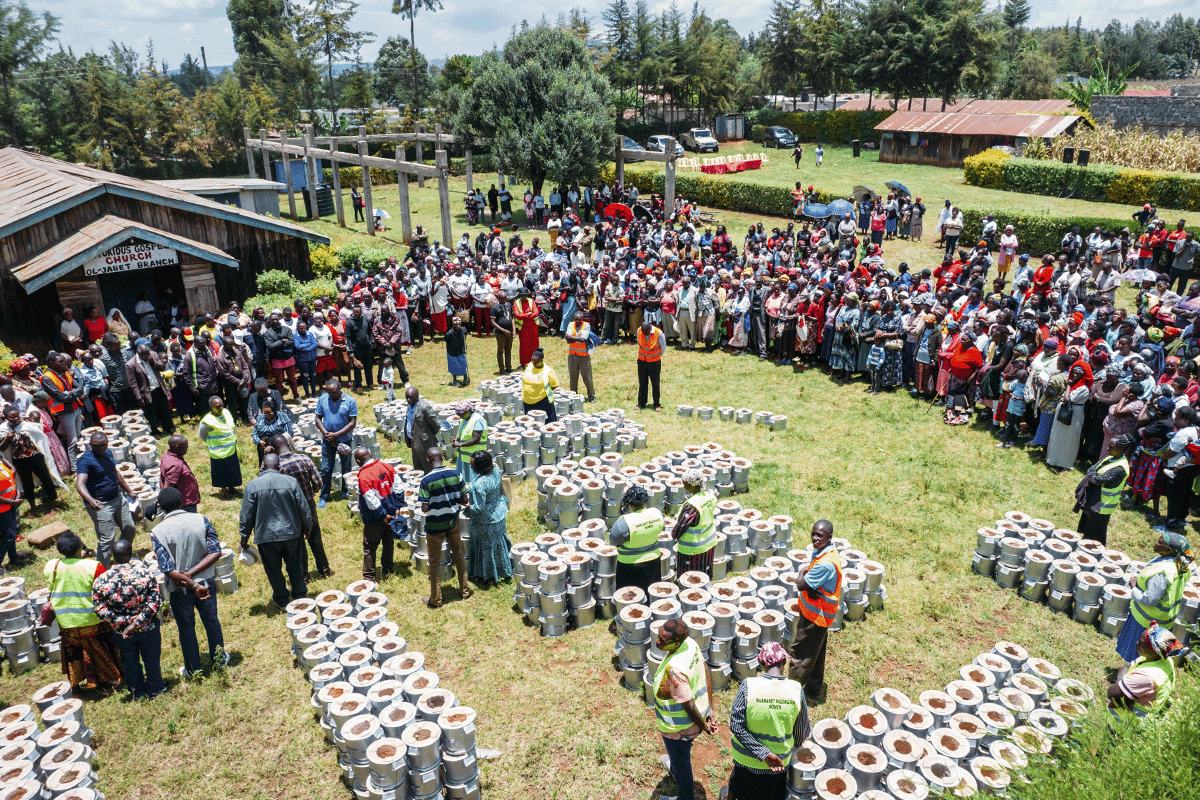 Aerial view of local people during cookstove distribution, Hongera Energy Efficient Cookstoves Project, DGB.
Aerial view of local people during cookstove distribution, Hongera Energy Efficient Cookstoves Project, DGB.
In essence, the TBL is a compass that guides organisations towards a future where success is defined by more than financial metrics. It calls on businesses to recognise their multifaceted role in society and the environment, inspiring a commitment to positive impact. As businesses integrate the principles of the TBL, they not only contribute to a more sustainable world but also position themselves as leaders in a global landscape increasingly defined by ethical and socially responsible practices.
Benefits of the Triple Bottom Line
- Holistic decision-making: TBL encourages a holistic approach to decision-making, ensuring that the consequences of actions are evaluated across economic, social, and environmental dimensions.
- Enhanced corporate reputation: Adopting the TBL framework can contribute to a positive corporate image, fostering goodwill within communities and among environmentally conscious consumers.
- Risk mitigation: By considering social and environmental factors, the TBL helps organisations anticipate and mitigate risks associated with changing societal expectations and environmental challenges.
Read more: How nature-based projects contribute to net-zero goals
Triple Bottom Line vs ESG
In the realm of sustainable business practices, both the TBL and Environmental, Social, and Governance (ESG) factors emerge as guiding frameworks. While sharing a common foundation in promoting responsible business conduct, they exhibit distinct focuses and applications.
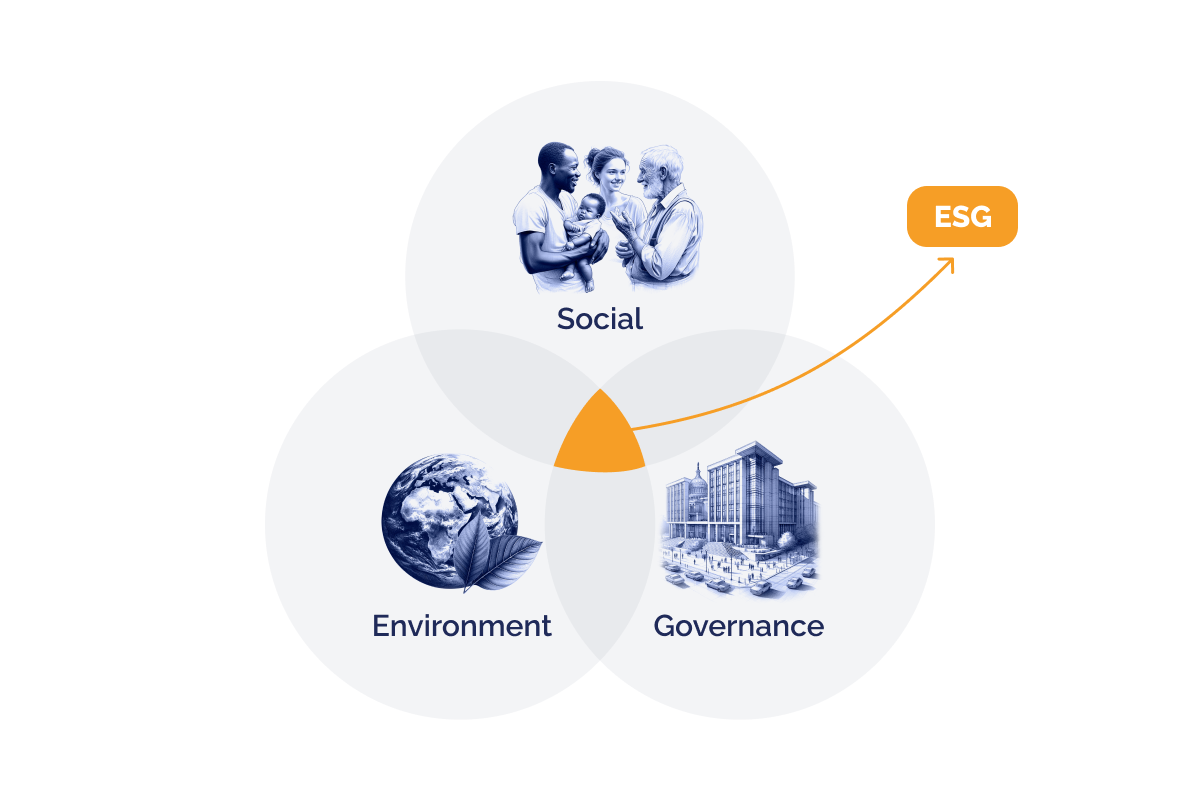 An explanation of Environmental, Social, and Governance (ESG).
An explanation of Environmental, Social, and Governance (ESG).
The TBL, encompassing People, Planet, and Profits, serves as a holistic accounting framework. It evaluates an organisation's performance across social, environmental, and financial dimensions, encouraging a comprehensive view of sustainability.
Read more: The power of sustainability: Why investing in sustainability drives faster company growth
ESG, on the other hand, narrows its focus to three specific criteria: Environmental, Social, and Governance. While the environmental and social aspects align with the TBL, governance in ESG emphasises ethical leadership and transparent corporate practices. ESG serves as an investment screening tool, allowing investors to align their portfolios with companies demonstrating responsible practices.
How to implement the Triple Bottom Line
Implementing the TBL involves navigating the complexities of measurement and fostering a mindset shift within the organisational culture.
Read more: Net zero: benefits, challenges, strategies, and the power of nature-based solutions
Stakeholder involvement is crucial for successful TBL implementation. Engaging stakeholders in decision-making processes, from selecting measurement metrics to determining the weighting of each dimension, ensures a more comprehensive and inclusive approach to sustainability.
Recognising the diverse nature of businesses, the TBL allows for flexibility in application. Entities can tailor the framework to their unique needs, projects, or geographic boundaries. This adaptability ensures that TBL measures are relevant, impactful, and aligned with the specific context of the organisation.
Measure your environmental impact
TBL implementation demands a tailored approach, considering measurement challenges, stakeholder involvement, and organisational adaptability. As businesses embark on this journey, they navigate sustainability intricacies while fostering a cultural shift that places equal emphasis on profit, people, and the planet.
 Two pupils from a local school during tree planting training, Hongera Reforestation Project, DGB.
Two pupils from a local school during tree planting training, Hongera Reforestation Project, DGB.
The challenge of calculating the TBL
As powerful as the TBL is in its conceptualisation, its practical application faces the challenge of measurement. The three Ps—People, Planet, and Profits—do not share a common unit of measure. Organisations debate whether to monetise, use an index-based approach, or adopt standalone metrics.
While profits are quantified in dollars, social and environmental factors present a more complex measurement landscape. This challenge has led to debates over the monetisation of dimensions like social welfare or environmental damage.
Some advocate for a comprehensive monetisation approach. However, objections arise on philosophical grounds, questioning the ethicality of putting a price tag on elements like wetlands or endangered species.
Read more: The interconnected world of carbon: exploring key carbon market concepts
Another option considers standalone metrics for each dimension, such as 'acres of wetlands' for environmental health. While this preserves the integrity of individual metrics, it risks metric fatigue for TBL users dealing with a plethora of sustainability measures.
An alternative solution proposes calculating the TBL in terms of an index, eliminating the issue of incompatible units. This approach can however introduce subjectivity in determining component weights and their relative importance. With the index approach, economic, environmental, and social measures encompass a broad range of variables, allowing for customisation based on specific goals and contexts.
- Economic measures: Economic variables delve into the bottom line and financial flow, encompassing income, expenditures, taxes, business environmental factors, employment, and business diversity factors.
- Environmental measures: Environmental variables measure natural resources, air and water quality, energy consumption, waste management, and land use/cover changes.
- Social measures: Social variables span education, equity, health, quality of life, and social capital, reflecting the human dimension of sustainability.
The application of the TBL by businesses, nonprofits, and governments shares common motivations for economic, environmental, and social sustainability. However, variations arise in how the three categories of outcomes are measured. Proponents have encountered challenges in creating comprehensive yet meaningful indices, leading to the development of various approaches, such as the Genuine Progress Indicator (GPI) and state-specific progress indicators.
The absence of a universal standard method for calculating the TBL introduces flexibility but also challenges. Each entity—be it a business, nonprofit, or government agency—can adapt the TBL framework to its unique needs, projects, or geographic boundaries.
DGB Group: supporting businesses on their path to sustainability
 Drone photo of a tree nursery in Kenya, Hongera Reforestation Project, DGB.
Drone photo of a tree nursery in Kenya, Hongera Reforestation Project, DGB.
As businesses embark on the journey of TBL implementation, navigating the intricacies of sustainability metrics and fostering cultural transformation becomes paramount. The challenge lies in measuring diverse dimensions, deciding on approaches such as monetisation or index-based calculations and ensuring stakeholder involvement. Recognising the diverse nature of businesses, the TBL allows for flexible application, tailoring the framework to unique needs and ensuring relevance to specific contexts. As businesses navigate this path, they not only measure their impact comprehensively but also contribute to a sustainable future.
Read more: The importance of carbon offsetting in achieving net zero
Let DGB Group be your ally in the realm of sustainability reporting and becoming carbon neutral. Recognising the significance of Environmental, Social, and Governance (ESG) reporting, we provide comprehensive solutions for businesses seeking to measure, track, communicate, and offset their impact. Leveraging an advanced carbon calculator and management tool, our team of experts gathers and analyses data to create detailed ESG performance reports. Our flexible reporting solution enables businesses to focus on the most relevant ESG topics for them and their stakeholders. Furthermore, we go beyond reporting, assisting businesses in identifying opportunities for improvement and maximising the many benefits of carbon offsetting and achieving net zero.
Take the first step towards a better future with DGB







